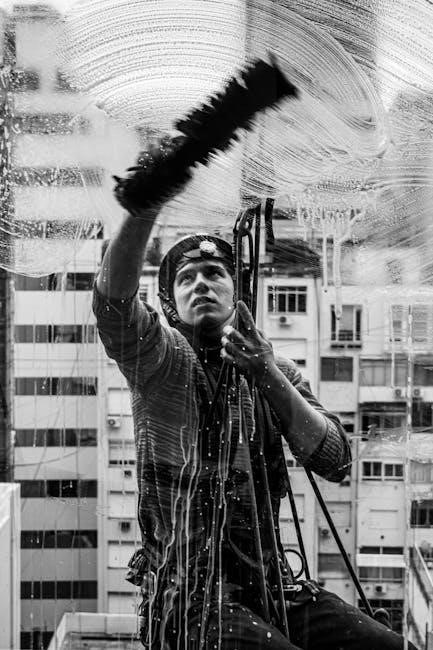manual replacement
Learn about manual replacement with a step-by-step guide covering preparation and planning for a successful experience using necessary tools and quality parts always.
Overview of the Process
The manual replacement process involves several key stages, including preparation, removal, and installation of the new manual transmission. This process requires careful planning and attention to detail to ensure a successful outcome. Understanding the basics of manual replacement is crucial to navigating the process effectively. A step-by-step approach can help to simplify the process and reduce the risk of errors. By following a well-structured plan, individuals can replace their manual transmission with confidence. The process typically begins with a thorough inspection of the vehicle to identify the source of the problem. From there, the old transmission is removed and the new one is installed, taking care to ensure proper alignment and connection. Overall, the manual replacement process requires patience, skill, and attention to detail. Proper execution of the process is essential to ensuring the vehicle operates smoothly and efficiently.

Preparation and Planning
Prepare for manual replacement by gathering tools and parts and planning the process carefully always using online resources and guides for assistance and support.
Gathering Necessary Tools and Parts
To start the manual replacement process, it is essential to gather all the necessary tools and parts. This includes a transmission jack, socket set, and wrenches.
A list of required parts should be made, including gaskets, seals, and bearings.
The quality of the parts is crucial to ensure a successful replacement.
Online resources and guides can provide valuable information on the tools and parts needed.
Additionally, consulting with a professional mechanic or transmission specialist can help identify the specific tools and parts required for the job.
By gathering all the necessary tools and parts, the manual replacement process can be completed efficiently and effectively, saving time and money in the long run.
The right tools and parts will also help to ensure the safety of the person performing the replacement and the vehicle itself.

Transmission Removal
Transmission removal requires careful planning and execution using proper techniques always.
Disconnecting the Battery and Removing the Transmission
To ensure safety, disconnect the vehicle’s battery before starting the removal process, preventing any accidental engine start.
Then, locate the transmission and prepare for its removal by gathering necessary tools and parts.
The transmission is typically bolted to the engine, so unbolt it carefully and support it with a transmission jack.
Properly support the transmission to avoid any damage or injury.
Carefully pull the transmission away from the engine, taking note of any wiring or hoses that may be connected.
Once the transmission is removed, inspect the area for any remaining components or debris that may need to be removed or cleaned.
Proper removal of the transmission is crucial for a successful manual replacement, so take your time and follow proper procedures.
Use a transmission jack to safely lower the transmission to the ground or a work surface.
This will give you clear access to the transmission and its components, making the replacement process easier and more efficient.
Follow the manufacturer’s instructions for transmission removal to ensure a safe and successful process.

Disassembly and Inspection
Begin disassembly by removing internal components carefully always.
Removing Internal Components
Removing internal components is a crucial step in the manual replacement process, requiring careful attention to detail and a thorough understanding of the transmission’s inner workings.
The process typically begins with the removal of the torque converter, followed by the dismantling of the gearsets and bearing assemblies.
This is often a complex and time-consuming task, necessitating the use of specialized tools and equipment.
By carefully removing and inspecting each component, individuals can identify potential problems and make necessary repairs or replacements.
The removal of internal components also provides an opportunity to clean and inspect the transmission case and other critical areas.
Overall, the careful removal and inspection of internal components is essential for a successful manual replacement.
Reassembly and Testing
Reassembly and testing procedures involve careful inspection and verification of manual replacement quality always ensuring proper function and performance afterwards using necessary tools.
Reassembling the Transmission
Reassembling the transmission requires careful attention to detail and a thorough understanding of the components involved. The process begins with the installation of the torque converter, followed by the reattachment of the transmission pan, filter, and valve body. Each component must be properly aligned and secured to ensure proper function and prevent damage to the transmission. The use of specialized tools and equipment is often necessary to facilitate the reassembly process. By following a step-by-step guide and taking the necessary precautions, individuals can successfully reassemble their transmission and restore their vehicle to working order. Proper reassembly is critical to the overall performance and longevity of the transmission, and should only be attempted by those with the necessary skills and expertise.
DIY Tips and Considerations
Consider experience and skill level before attempting manual replacement to ensure success and safety always using proper techniques.
Weighing the Pros and Cons of DIY Replacement
When considering manual replacement, it is essential to weigh the pros and cons of DIY replacement. One of the main advantages is cost savings, as DIY replacement can be significantly cheaper than hiring a professional. Additionally, DIY replacement can be a learning experience, allowing individuals to develop new skills and gain a deeper understanding of their vehicle. However, there are also potential drawbacks to consider, such as the risk of making mistakes and causing further damage to the vehicle. It is crucial to carefully evaluate these factors and consider one’s own experience and skill level before deciding whether to attempt DIY replacement. By doing so, individuals can make an informed decision and choose the best approach for their needs. This will help ensure a successful and stress-free manual replacement experience.

and Final Thoughts
Manual replacement completion requires careful final inspection and testing always using necessary tools and quality parts for a successful outcome every time.
Importance of Proper Manual Replacement
Proper manual replacement is crucial for the overall performance and longevity of a vehicle. A well-replaced manual transmission ensures smooth gear shifting, optimal fuel efficiency, and reduced risk of breakdowns. It also helps to prevent damage to other critical components, such as the engine and drivetrain. Furthermore, a proper replacement can enhance the driving experience, providing a more responsive and enjoyable ride. By following the correct procedures and using quality parts, individuals can ensure a successful replacement, avoiding costly repairs and potential safety hazards. Additionally, proper manual replacement can also help to maintain the vehicle’s value, making it an important consideration for car owners. Overall, the importance of proper manual replacement cannot be overstated, and it is essential to approach the process with care and attention to detail, using necessary tools and quality parts always.

